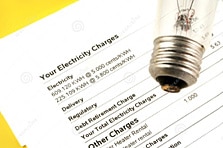HOW TO REDUCE PEAK DEMAND CHARGES ON YOUR ELECTRICITY BILL

While most consumers are confused by an ill-explained formula, this shift presents various opportunities in implementing methods to reduce your peak energy demand charges. This paper demystifies electricity charges, along with addressing such methods in reducing demand charges.
Previously, both domestic and commercial customers paid only for the electricity they used in cents per kWh. Their bill was a simple summation of the amount of power they used in kWh over a given period.
Electricity retailers now have a new way of billing their customers to pass on the cost of energy demand spikes at peak energy periods. Bills are now broken up into 3 categories
- Energy usage (charged in cents/kWh),
- Poles and wires charges, passed on from the network (charged in cents/kWh),
- Peak Demand charges (typically charged in $/KVA/month).
By billing in this way, retailers charge consumers for their potential maximum peak demand, often over a twelve month period. Their reasoning for Peak Demand charges, is to allow for the “setting aside” of sufficient electricity during peak events should it be required. This is typically based on the hottest days of the year where a large amount of electricity is being used by air conditioning systems running at maximum capacity.
The peak demand charge has been creeping up over time and now for most commercial and industrial consumers, these network demand charges make up the bulk of an electricity bill.
Typical electricity consumers are now left scratching their heads in an effort to reduce the peak demand charges and “flatten out” their electricity demand.
Jake Thodey, principal engineer from Simons Green Energy (SGE) has offered the following suggestions for ways in which you can look at flattening out your electricity demand peaks.
- Smart load management. This method suggests you run non-essential or periodically essential services outside of the peak demand times in order to passively reduce total electrical demand. It can be as simple as turning air conditioning temperatures set points up a few degrees in the middle of the day on very hot days to try to reduce the strain on the cooling system, and thus the reduce the total electrical draw.
- Load shedding. This method is similar to the above however it is more actively controlled approach. This method employs an array of electronically controlled and metered sub-systems, which actively turn off or ramp down non-essential high consumption circuits in order to reduce the total demand. For example some new “smart fridges” can sense when the grid is strained and do not turn on their compressors at peak times.
- Non-conventional chillers. Reducing the need for electricity during high-load periods is key, and as electricity consumption is typically related to temperature, natural gas powered chillers such as natural gas heat pumps and natural gas-fired absorption chillers can offer a cost saving and a peak demand shaving alternative to standard electrical chillers.
- Energy storage and demand levelling. Moving consumption from peak to off-peak periods has the dual benefit of reducing peak demand as well as shifting usage costs to lower off-peak rates. As an example, chilled water or phase change thermal storage systems may be used to generate the cooling required during off-peak periods, for use in the middle of the day when rates are high.
- Extra generation. This system employs paralleling embedded generators such as natural gas cogeneration systems, gas generators or parallel-enabled diesel generators. The system uses an alternative energy source, such as natural gas to generate the power instead of buying the power from the grid. This fuel switching has the benefit of avoiding the peak demand charge as there is no peak demand charge for natural gas, and the power generated onsite is very often at a cheaper price (c/kWh) than buying the electricity from the grid.
By employing a range of the above measures, businesses can reduce the strain on the grid as well as on their bottom line. By diversifying energy dependence with non-standard solutions, businesses can invest in their future profits wisely with new ways of managing energy.
Simons Green Energy are experts in electrical and thermal engineering as well as alternative energy solutions. SGE specialises in a range of energy saving technologies including natural gas cogeneration and gas generation, as well as gas fired absorption chillers. SGE can work with businesses to reduce their dependence on the grid, and the associated costs that go with it.
For more information contact Toni at Simons Green Energy and Simons Boilers on 02 8338 8660 or via email toni@simonsgreenenergy.com.au






